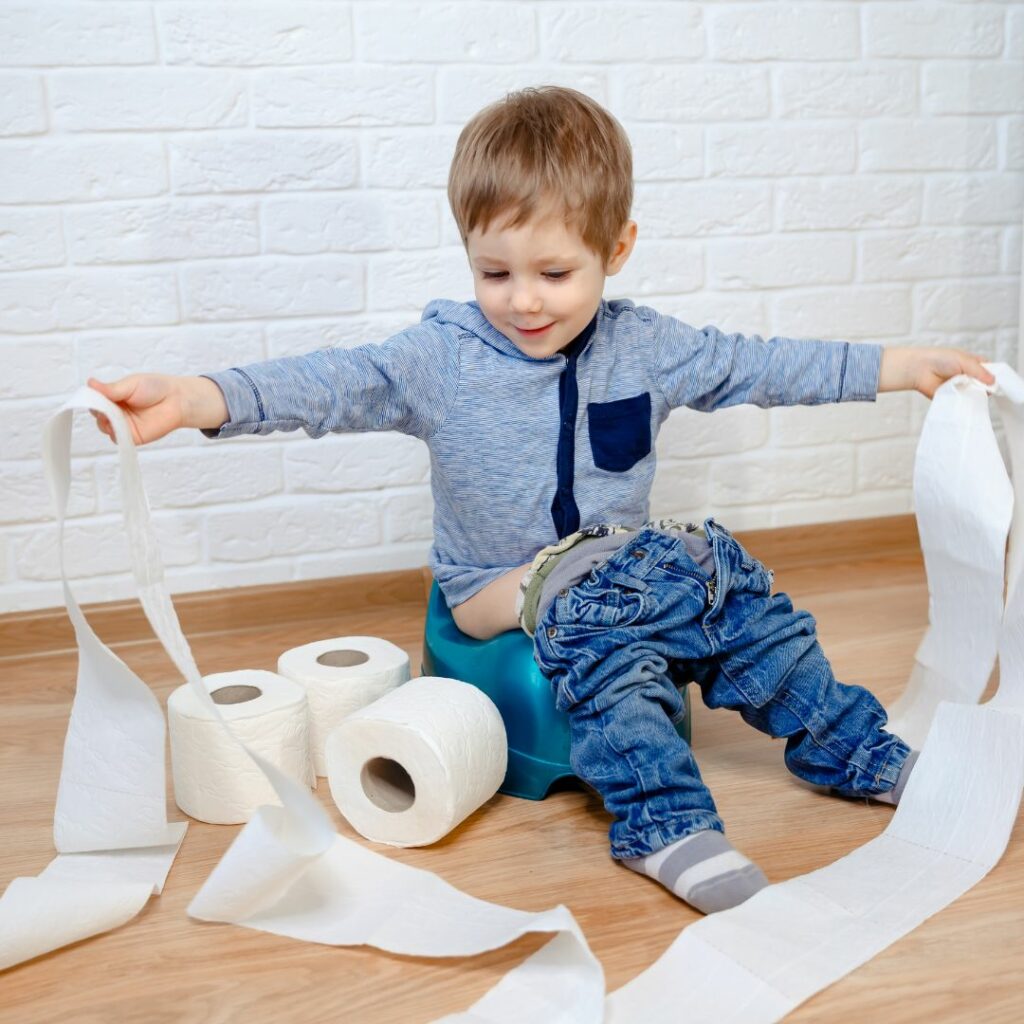Learning to use the bathroom is an important step for a child’s independence. This skill can often be difficult for a child on the spectrum, but we’re here to tell you that it doesn’t have to be.
Here at Ready Set Connect we are potty training experts; it is one of the skills we frequently teach. In this month’s blog, we’ll go over some tips for how you can support your child’s potty training using some ABA strategies at home.
- Look for readiness signs
Before you even start, make sure your child is ready. What does being ready look like? Your child can:
- hold urine in their bladder for at least one hour
- sit on the toilet for a minimum of three minutes at a time
- have the motor skills to pull down/pull up their pants
- can learn to communicate the need to use the toilet (this does not have to be verbal; they can use sign language or PECS)
Keep in mind that your child with autism may not communicate these skills to you as clearly as a neurotypical child. However, you can find alternative ways to communicate such as signals, gestures, or single words.
- Ditch the diapers!
No more diapers or pull-ups: go straight to underwear. If they are wearing underwear, they’re more likely to feel wet if they have an accident and be uncomfortable, which will motivate them to do something about it.
- Start and stick to a toilet training schedule
Consistency is key! Not only follow the same schedule, but try to use the same timer and alarm sound to indicate when it is time for them to try. Don’t make any sudden changes in the routine. Start by trying every 20 minutes. Have them sit on the potty for a few minutes at a time, and when they are successful, reward them with a motivating reinforcer.
Once they are consistently going, slowly increase the intervals by 10 minutes, until they are consistently telling you when they have to go.
- Choose a motivating reinforcer
Make sure the reinforcer is something motivating and realistic: they can’t eat a whole cookie every time they successfully go on the potty, nor can many parents afford to give the child a whole book every time.
You know your child best and what they are interested in: if a sticker is exciting for them, go with a sticker. If they absolutely love buttons, give them a button. Just make sure that they are positively rewarded each time they succeed.
- Drink up!
If your child isn’t going often enough, get them drinking! If they aren’t big drinkers, try giving them a salty snack to get them thirsty. The more opportunities they have to use the potty in the beginning, the more chances for success they have.
- Be positive!
It can be a challenge to learn a new skill, especially one as essential as going on the potty. Your child can sense your frustrations, so try your best to stay positive. Accidents will happen, so just remind your child that it’s okay, and you’ll keep trying. Celebrate the successes! And if now’s not the right time, it’s okay to take a break and try again in a few weeks or months.
Need more help potty training your child? Contact us at https://readysetconnect.org/contact/ to discuss your child’s specific needs.
Resources:
https://pottygenius.com/blogs/blog/potty-training-a-child-with-autism-using-aba
https://www.ncbi.nlm.nih.gov/pmc/articles/PMC3592490/
https://journals.sagepub.com/doi/abs/10.1177/10962506221138542
https://www.research.chop.edu/car-autism-roadmap/toilet-training

